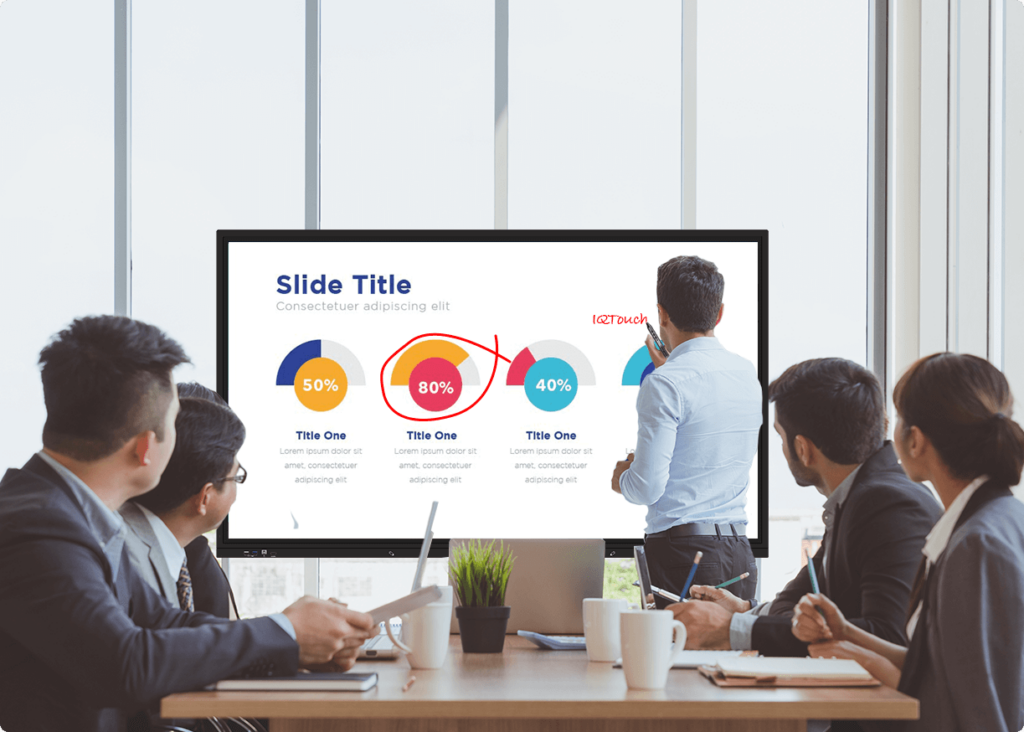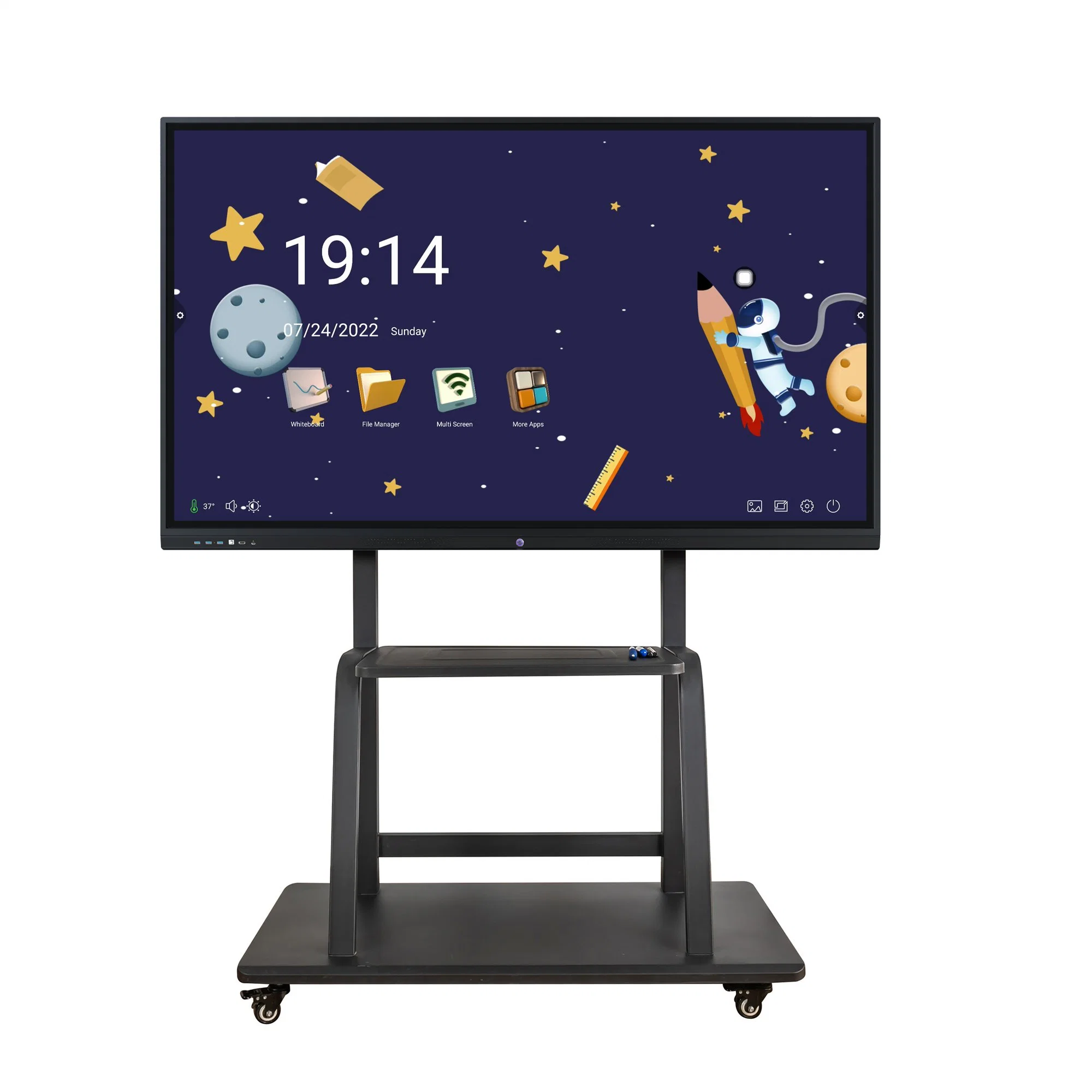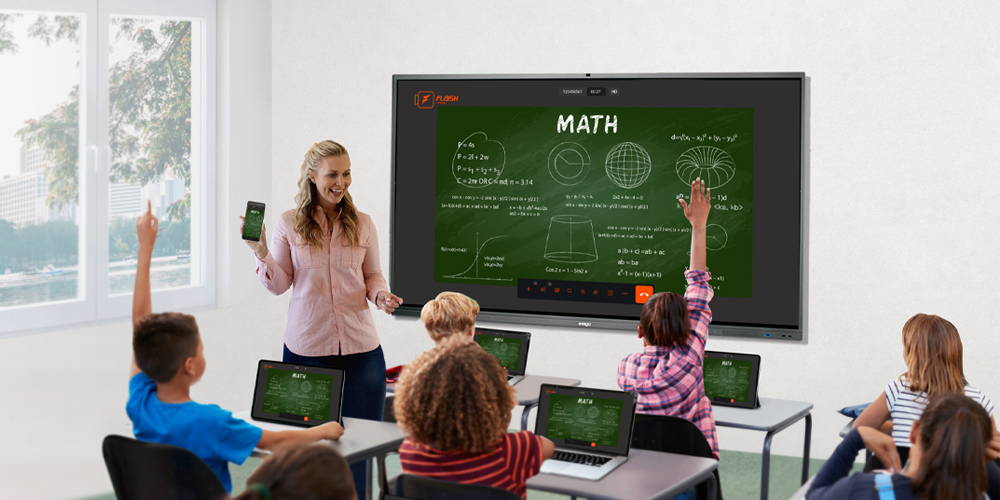Why we need of Interactive Flat Panels for office
Interactive flat panels (IFPs) also serve an important role in office environments, offering various benefits that enhance productivity, collaboration, and communication among employees. Here’s how IFPs contribute to the modern office setting:
- Enhanced Collaboration: IFPs facilitate interactive meetings and brainstorming sessions by allowing multiple participants to interact with the display simultaneously. Users can annotate documents, draw diagrams, and make notes directly on the screen, fostering real-time collaboration and idea sharing.
- Efficient Presentations: IFPs provide a large, high-resolution display that is ideal for delivering impactful presentations. Presenters can easily display multimedia content, diagrams, and charts, ensuring that information is presented clearly and effectively to colleagues or clients.
- Video Conferencing and Communication: Many IFPs come equipped with built-in cameras, microphones, and speakers, making them suitable for video conferencing and virtual meetings. Employees can conduct face-to-face meetings with remote colleagues or clients, share screens, and collaborate on documents in real time.
- Integration with Business Applications: IFPs integrate with a variety of business applications and software tools commonly used in offices, such as Microsoft Office suite, Google Workspace, project management software, and CRM systems. This integration allows for seamless access to and interaction with digital resources during meetings and presentations.
- Interactive Training and Workshops: IFPs can be used for conducting interactive training sessions, workshops, and seminars within the office environment. Trainers can engage participants through interactive exercises, quizzes, and demonstrations, enhancing learning outcomes and knowledge retention.
- Digital Whiteboarding and Note-taking: IFPs function as digital whiteboards, enabling employees to brainstorm ideas, capture meeting notes, and create diagrams directly on the screen. Notes can be saved digitally and easily shared with meeting attendees, eliminating the need for traditional whiteboards and paper notes.
- Flexibility and Mobility: Some IFPs are designed with mobile and wireless capabilities, allowing employees to connect and share content from their laptops, tablets, or smartphones wirelessly. This flexibility enables seamless transitions between different presenters and enhances meeting efficiency.
- Environmentally Friendly: IFPs contribute to sustainability efforts in offices by reducing paper usage associated with traditional whiteboards and printed materials. They also have a longer lifespan and require less maintenance compared to projectors and other older technologies.
Overall, interactive flat panels enhance collaboration, streamline communication, and improve productivity in office settings by providing a versatile platform for presentations, meetings, and
interactive discussions. They empower employees to work more efficiently and creatively, leading to enhanced business outcomes and organizational success.



